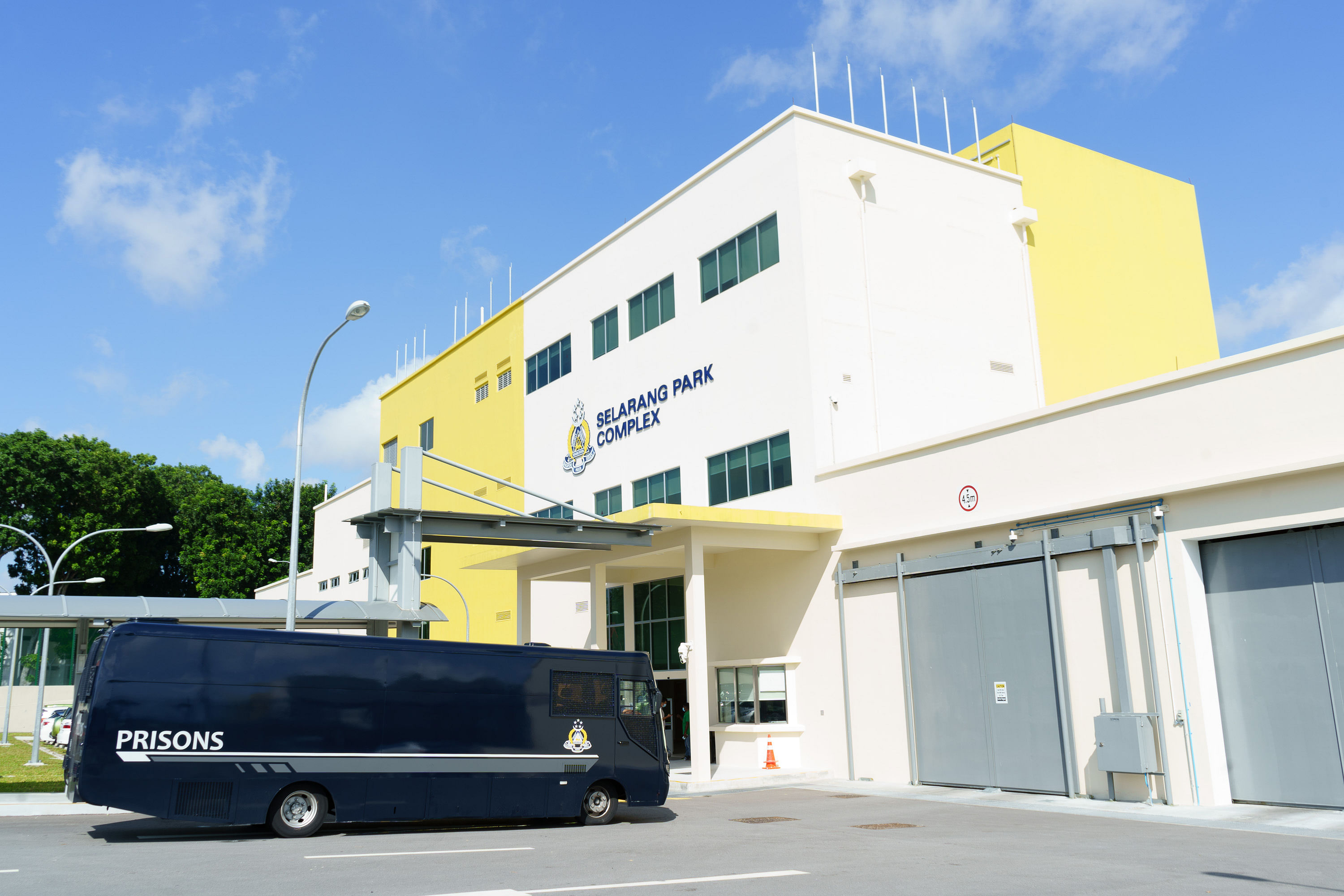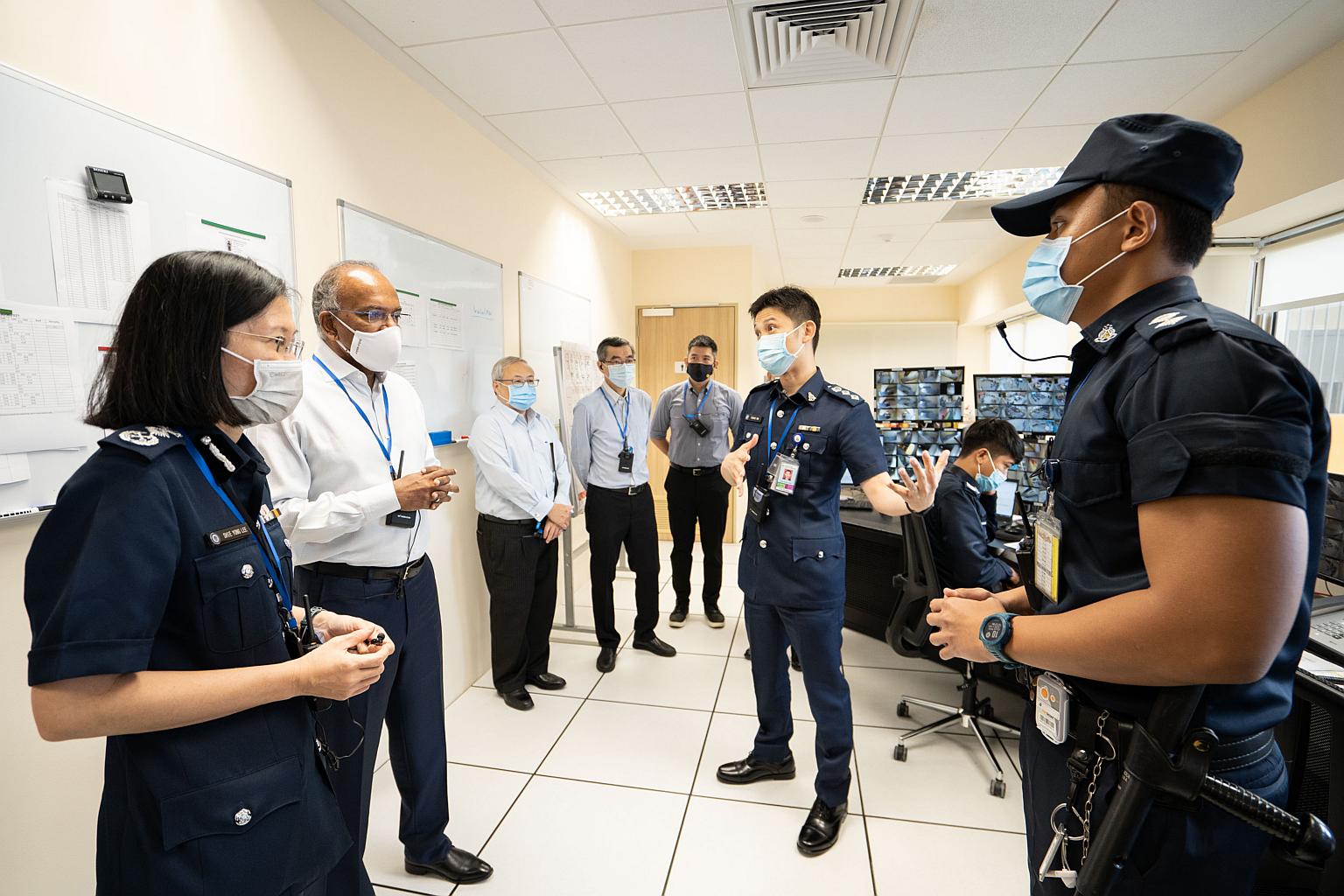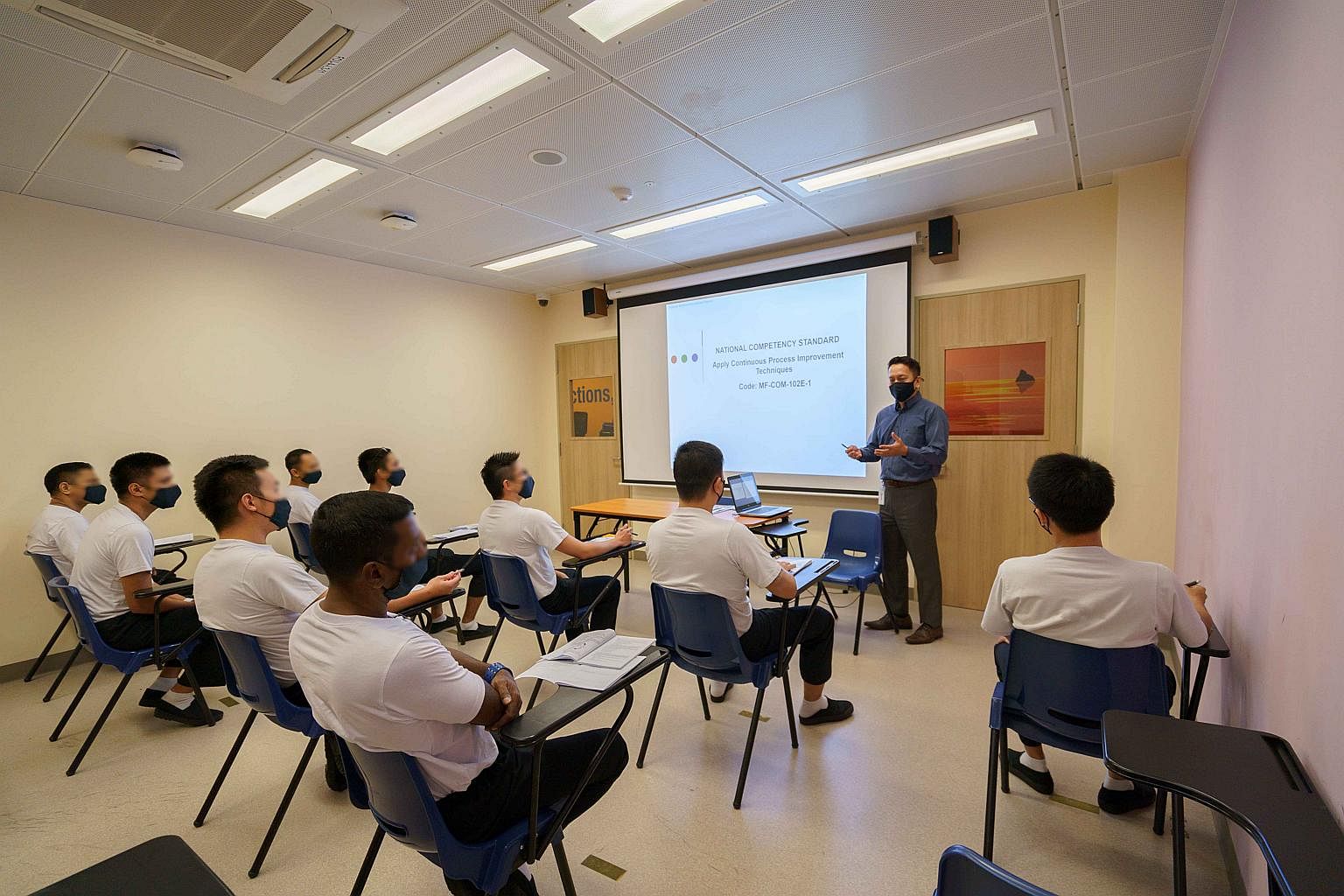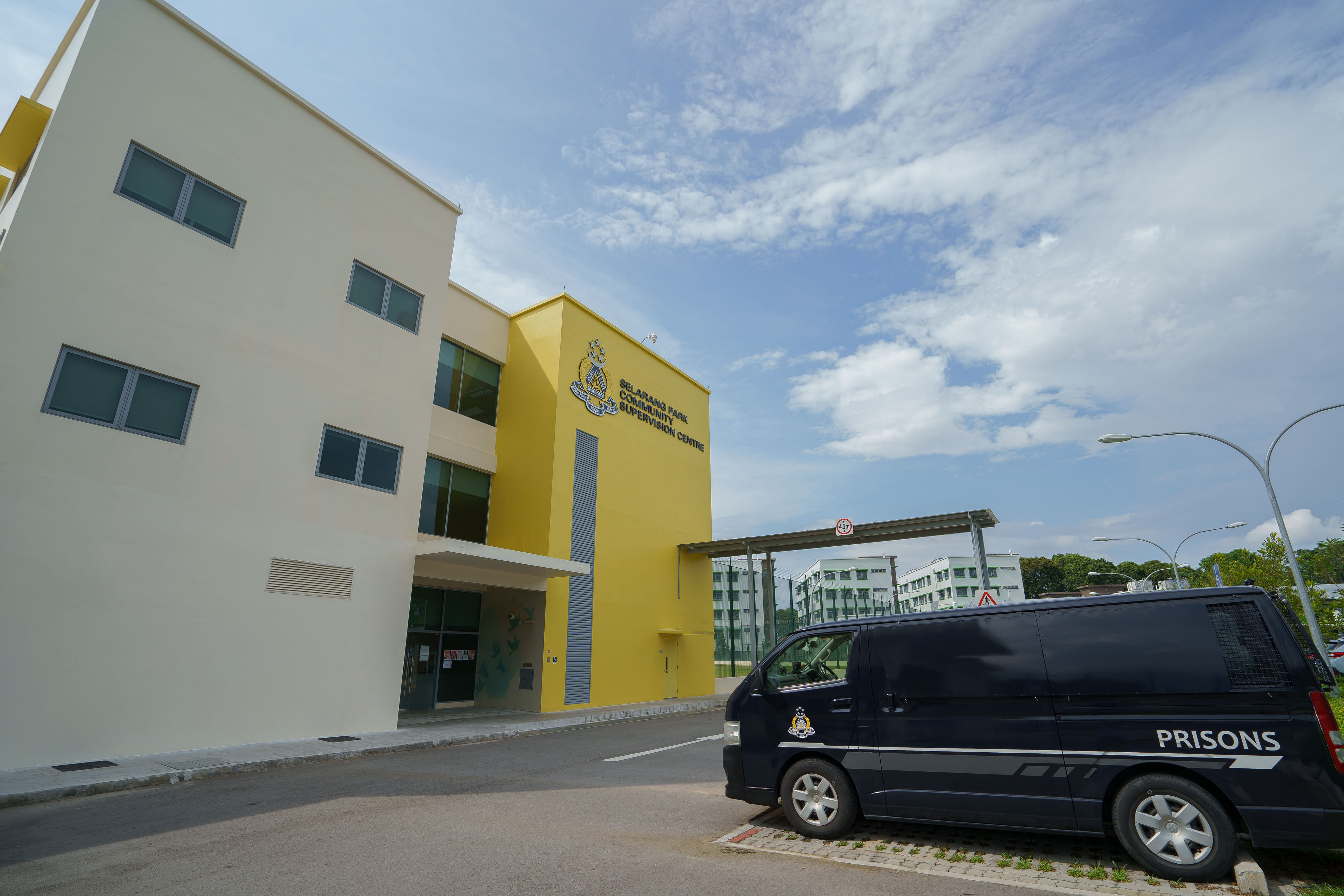SINGAPORE - Unlike what is standard procedure for those imprisoned elsewhere in Singapore, inmates at the Selarang Park Complex need not be escorted by prison officers to access several areas in it.
For example, they only have to scan their wrist tags and faces at turnstiles located between two of the complex's facilities before they are allowed through.
This is possible due to extensive closed-circuit television (CCTV) coverage of the facilities and the use of facial recognition technology.
Selarang Park Complex, which was officially opened by Minister for Law and Home Affairs K Shanmugam on Thursday (April 22), became fully operational in September last year.
It comprises several facilities, including a Drug Rehabilitation Centre (DRC) for drug offenders.
The complex is the first and currently the only prison site in the country to use facial recognition technology, said the Singapore Prison Service (SPS).
DRC inmates go through psychology-based correctional programmes and skills training, as well as receive family support and religious services.
The technology used in the complex is part of the SPS' "Prison Without Guards" strategy, which aims to boost operational efficiency and enable prison officers to focus on inmate rehabilitation.
Facial recognition technology can also be used to remotely conduct muster checks - headcounts of inmates in their cells - to complement the routine physical muster checks by prison officers.
Images of the inmates would be captured through CCTV cameras in their cells, with any discrepancies between these images and those in the prison database highlighted to prison staff.
"Additionally, facial-recognition capabilities also facilitate the detection of unauthorised access at strategic locations," said the SPS.
The agency also said using facial recognition technology has reduced the time and effort required for physical muster checks and escort duties within the complex.
"As a result, prison officers are availed to perform higher-order functions in rehabilitation and operations," added the SPS.

The use of advanced video analytics to detect irregular behaviour - such as fighting between inmates or an inmate suddenly collapsing - in cells is expected to be piloted at the complex's DRC in July.
Utilising CCTV cameras in cells, the analytics system will alert prison officers when it picks up abnormal behaviour.
The use of such analytics at the complex's common areas is also in the works, with SPS saying that it is considering a pilot of this system at the DRC's passageways.
Electronic tablets are also provided to the inmates to allow them to read e-books and write e-letters to friends and family, among other things.
A 30-year-old inmate said he did not have any problems getting used to the technology implemented at the complex, adding that facial recognition technology can already be found in smartphones.
"The challenge is for the older inmates," he added.
In his speech at Thursday's opening, Mr Shanmugam said: "(The complex) is a new milestone with better infrastructure, incorporating technology and programmes to support inmates and our officers, who will be better empowered to help the inmates."
He also said there are plans to introduce a new community-based programme (CBP).

CBPs allow suitable offenders to serve the tail end of their sentence in the community, with conditions imposed.
The new programme, called the Employment Preparation Scheme, will be an expanded version of the Work Release Scheme, an existing CBP.
"This new scheme will allow inmates to undergo skills upgrading, further their education (and) enhance their employability while under CBP," said Mr Shanmugam.
"They will be better prepared to deal with work after their release."

Superintendent 1A Terence Ong, who oversees the complex's DRC, said: "Inmates face challenges in reintegration, such as maintaining employment and staying away from anti-social peers."
He also said that the SPS will continue to work with its community partners, such as halfway houses, to provide inmates with structure support and supervision to prevent them from reoffending.
Facilities in Selarang Park Complex
The Selarang Park Complex was officially opened by Minister for Home Affairs K. Shanmugam on Thursday. Among the facilities are the following:
Drug Rehabilitation Centre (DRC)
- currently houses about 450 first and second-time DRC inmates
- can house up to 1,480 inmates
- came into operation in September last year

Work Release Centre
- provides a step-down environment to help inmates on community-based programmes (CBP) reintegrate into society
- can house up to 1,200 inmates
- came into operation in July last year
Selarang Halfway House
- first government-run halfway house facility
- provides structured aftercare support and a conducive rehabilitative environment for selected high-risk former offenders on the mandatory aftercare scheme
- also offers a residential and recovery programme for inmates on CBP
- officially opened on Jan 11, 2019

Selarang Park Community Supervision Centre
- functions as a reporting centre for urine tests and a facility for CBP inmates to be released following the completion of their programmes
- houses the Yellow Ribbon Singapore Employment Assistance Unit, which provides employment-related support such as job matching to inmates and former offenders
- came into operation in July last year
Quarantine Centre
- will be activated to house inmates with highly contagious diseases, such as Covid-19, away from the main prison population
- can house up to 120 inmates
- came into operation in April last year


